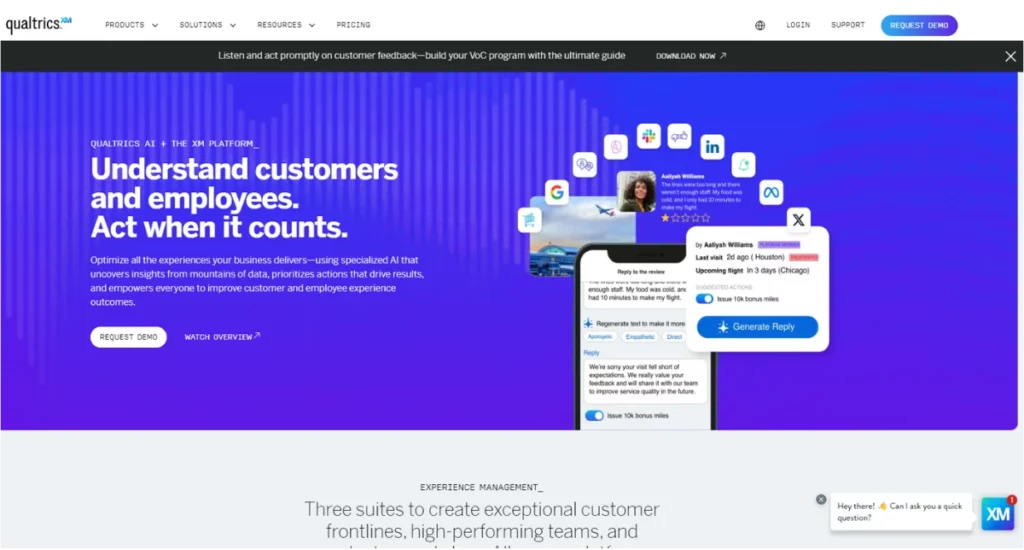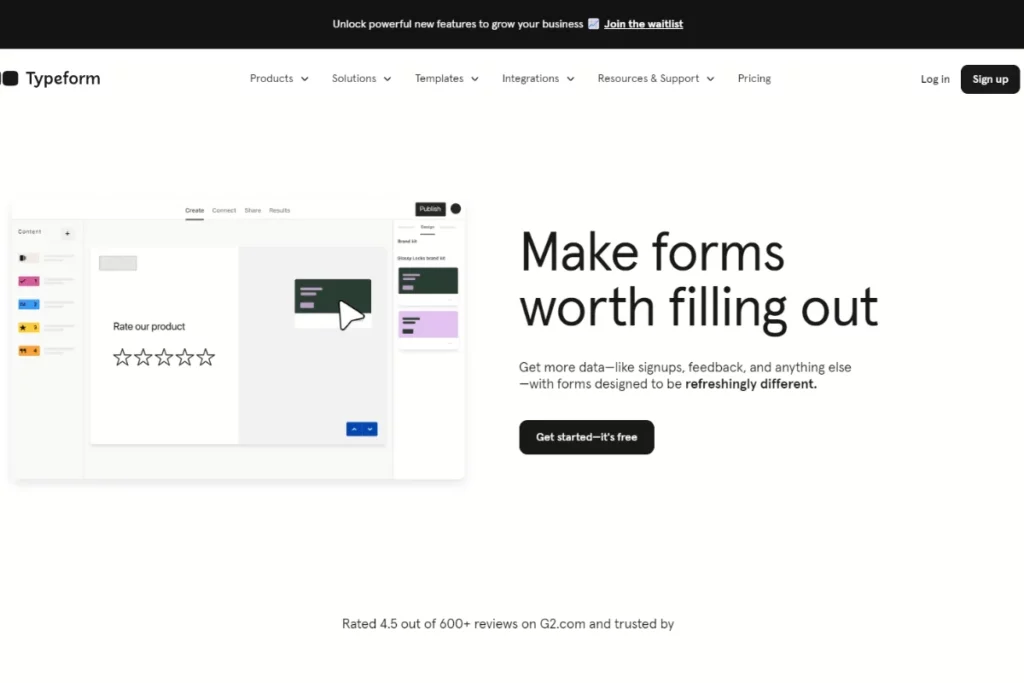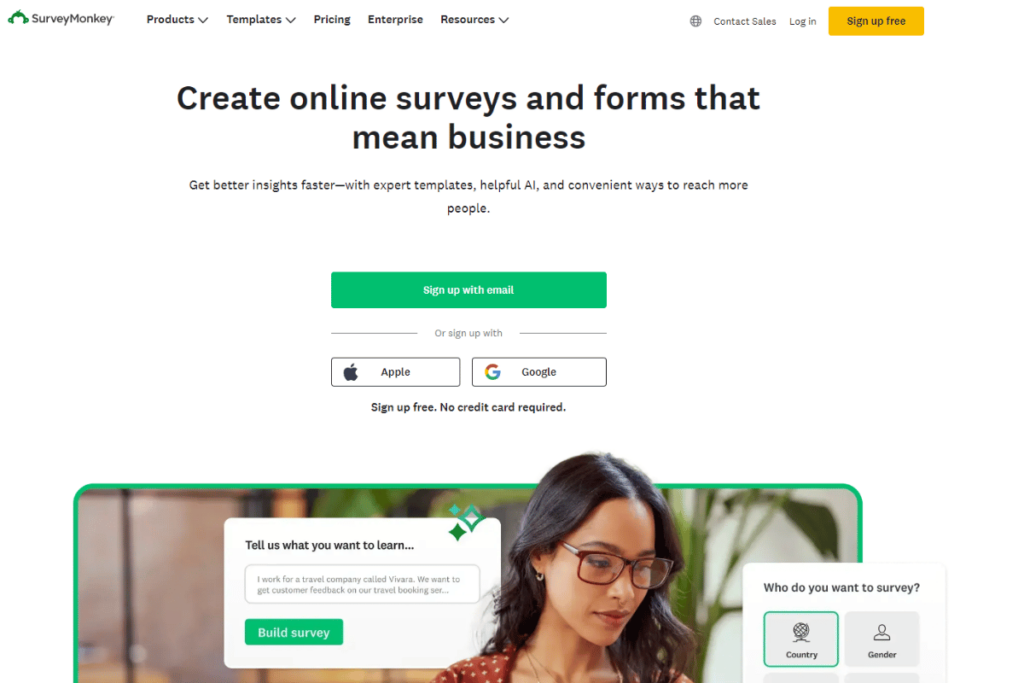Guesswork has no place in product development. That said, collecting product feedback only helps if you do it right.
When your surveying is half-baked, you lose touch with your users’ needs and end up with a product that belly-flops. Or nose-dives. In any case, it misses the mark.
This post covers everything you need to make your feedback count:
- Tips on crafting smart product feedback questions
- Tools that help you pull out relevant insights
- Examples of practical survey questions
- Strategies to boost response rates
Struggling with feedback collection and analysis? Create a free account with our AI research assistant. Marvin uses automatic workflows to turn your product feedback into clear, actionable insights (in a fraction of the time).

Importance of Product Feedback Surveys
Feedback saves you from building something you think people need when you could create something you know they want. Surveys, in particular, help you remove the guesswork in a structured, reliable way.
Here’s why product feedback surveys will give you the most bang for your research buck:
- You zoom in on the user experience parts that move the needle the most
- You can use both closed and open-ended questions
- Customers don’t need your assistance to respond
- The process is fast, structured, and scalable
With well-crafted surveys, you ask questions that reveal the “why” behind user actions and preferences. You drill down into the customer experience and keep your data organized.

Types of Product Feedback Questions
Asking any questions won’t get you answers that help improve your product. Below, you’ll see the main types of survey questions for product feedback that allow you to:
- Guide your customers to the answers you’re searching for
- Uncover different angles of their experience
Open-Ended Questions
These are the “tell me everything” questions. They let users share whatever’s on their minds, giving you raw, unfiltered insights.
With open-ended questions, you’re asking for the story behind their experience. While you might get a bit of fluff, you can also discover new ideas or pain points you haven’t considered.
Example questions:
- “What do you find most frustrating about using our product?”
- “How would you describe our product to someone else?”
Best for:
- Understanding user motivations
- Discovering new ideas
- Capturing honest feedback on complex experiences
Closed-Ended Questions
Closed-ended questions let you set boundaries and help users focus their feedback.
These questions are great when you need clear, measurable answers that you can later cross-check with your qualitative research using a methodological triangulation process.
Example questions:
- “Which feature do you use most often?” (with a list of features to choose from)
- “Do you feel our product has improved since the last update?” (Yes/No)
Best for:
- Getting straightforward, easy-to-compare data
- Checking if certain features resonate
- Guiding quick decisions
Rating Scale Questions
While rating scales restrict responses, which means they’re technically closed-ended, they deserve their own mention.
With these questions, you capture user sentiment on a sliding scale, which gives a sense of intensity without getting into specifics.
Example questions:
- “How satisfied are you with the product?” (1-5 scale)
- “How easy was it to use this feature?” (1-10 scale)
Best for:
- Tracking user sentiment or satisfaction over time
- Spotting trends at a glance
- Seeing where the product is excelling or needs work

How to Craft Effective Product Feedback Questions
An effective product feedback questionnaire makes it easy for users to respond honestly. It also spares you from guessing what they meant.
Here’s how to craft questions that get you clear, actionable insights:
- Set context: Briefly explain the purpose of the feedback to help users understand and engage.
- Be specific: Guide them with specific features or experiences to avoid vague answers.
- Mix it up: Use open-ended, closed-ended, and rating scale questions to get a well-rounded view.
- Keep it short: Clear, concise questions encourage thoughtful, honest responses.

Examples of Product Feedback Survey Questions
Do you need help determining what questions to ask for product feedback? These examples are ideal for obtaining specific, actionable insights on the following key aspects:
- User satisfaction
- Potential issues
- Feature preferences
Use them to build surveys that will guide your future product development.
Start with Overall Satisfaction and General Impressions
These questions set the tone and give you a broad understanding of user satisfaction:
1. How well does the product meet your needs? (1-5 scale)
2. On a scale from 1 to 5, how likely are you to recommend this product?
3. How would you describe your overall experience in one sentence?
4. What do you like most about the product?
Dive into Specific Features and Ease of Use
Now that users are warmed up, you can move to specific features, their performance, and ease of navigation:
5. Which feature do you use most often? (multiple choice: list of features)
6. How satisfied are you with your experience using [specific feature]? (1-5 scale)
7. How easy was navigating through [specific product section]? (1-10 scale)
8. How intuitive do you find [specific feature] to use? (1-5 scale)
9. How easy is finding support or resources when you need help? (1-5 scale)

Explore Pain Points and Improvement Areas
This part can uncover any potential issues and give insight into areas for development:
10. Did you encounter any issues when using [specific feature]? (Yes/No)
11. What’s one thing you’d change about our product?
12. Are there any features you wish we had?
Finish with Contextual and Complementary Product Use
End by asking about products they use alongside yours, which can offer context for user needs and positioning:
13. What made you choose our product over others?
14. How frequently do you use our product? (Daily, Weekly, Monthly, etc.)
15. What other products do you use alongside ours?

Our Favorite Tools for Collecting Feedback
Feedback collection requires tools to ensure smooth surveying, analysis, and actionable insights.
Here’s our top pick of tools that cover everything from creating surveys to extracting meaningful patterns:
1. Marvin

Best for centralized feedback collection and advanced qualitative analysis.
Marvin is your research repository and the ultimate resource for anything that follows the actual survey. It comes into play right after you’ve gotten the answers from your respondents, regardless of the channels you used.
Marvin’s AI workflows will analyze survey data to tag and extract themes faster than you can say “qualitative analysis.” It’s everything in one place, with seamless integrations such as Zoom, Google Meet, and Notion.
Notable features:
- A centralized repository acts as one home for all your survey data
- AI technology tags, sorts, and runs NPS analysis of thousands of survey responses in minutes.
- Turns quantitative and qualitative insights into beautiful visuals for stakeholders.
- Works with the tools you already love.
With Marvin, you’re turning feedback into powerful insights that drive smart, user-focused decisions. Create a free account today to see how easily you can manage and analyze your product feedback from start to finish.
2. Qualtrics

Best for advanced survey design and comprehensive experience management.
Qualtrics was built for organizations that need complex features, powerful logic, and granular data insights. If you’re looking to get serious feedback from a large pool of users, this tool can help.
Notable features:
- Advanced logic allows you to customize paths and questions for deep insights
- Experience management goes beyond surveys to support the whole user experience
- Drag-and-drop software interface makes survey creation and analysis intuitive
3. Typeform

Best for engaging, user-friendly surveys.
With Typeform’s surveys, feedback feels like a conversation. Its beautifully designed, interactive questionnaires keep users interested, leading to thoughtful responses. Plus, you can send it anywhere — email, social media, or embed it on your site.
Notable features:
- Customizable templates allow you to create beautiful and easy-to-personalize surveys
- Conversational style and engaging design get users talking
- Easy distribution lets you share questions wherever your audience is
4. SurveyMonkey

Best for mid-level surveys with advanced logic and analytics.
Try SurveyMonkey if you’re looking for more advanced survey tools without overwhelming bells and whistles. It has smart survey logic, helpful analytics, and many integrations to fit into any workflow.
Notable features:
- Customizable paths for more focused responses
- AI-powered survey generation from simple prompts
- Survey Score evaluation with improvement suggestions before sending

Strategies for Maximizing Response Rates and Quality of Feedback
Getting users to respond and give thoughtful feedback takes some finesse.
Follow these strategies to obtain better responses (without begging or harassing people):
- Keep it short: Users love brevity. Ask only what you need, and they’re more likely to respond fully.
- Personalize your request: A little personalization — mentioning their recent activity or addressing a specific feature they’ve used — makes users feel valued and motivates them to engage.
- Offer an incentive: Small rewards, such as discounts or free trials, can go a long way in boosting response rates.
- Time it right: Send surveys after a key experience (for example, after completing a purchase) so it’s fresh in their minds.
- Follow up gently: A friendly reminder, not a pushy one, can nudge users to respond without annoying them.

Frequently Asked Questions (FAQs)
Want to avoid product feedback questions that only get you a shrug or a “meh”? Here’s what else you should know:
How Often Should You Collect Product Feedback?
Consistency matters, but don’t overwhelm users. Collect feedback every few months, especially after major updates or new feature launches.
This keeps insights fresh and shows users that their input shapes your product’s growth.
How Do You Analyze Product Feedback Effectively?
To make the most of the data you’re gathering, aim for the following:
- Centralize all feedback in one place.
- Group it by themes, such as usability or feature requests.
- Look for patterns across responses.
- Prioritize recurring issues that align with product goals.
- Use these insights to make specific, user-focused improvements.
What Are Common Mistakes to Avoid When Asking for Feedback?
Here are the biggest don’ts of product feedback questions:
- Asking vague questions
- Overwhelming respondents with long surveys
- Sending surveys too often
- Ignoring their responses and not building on feedback
What Types of Incentives Can Be Offered for Feedback?
Small incentives work best because they feel thoughtful without being excessive. Try offering discounts, early access to features, or entry into a prize draw.
This way, you’ll show users you appreciate their time and input but keep things low-key enough to avoid being pushy.

Conclusion
With the right approach and a few strategic questions, collecting product feedback doesn’t have to be complicated.
To uncover insights that shape a product users love, you don’t necessarily have to ask more questions. Instead, focus on the following essentials:
- Ask the right questions.
- Use tools that support various survey analysis methods.
Speaking of tools, we have an AI research assistant that can make survey response management and analysis significantly easier. Join Marvin for free to bring all your survey data in one place and reduce your time to insights by days.

